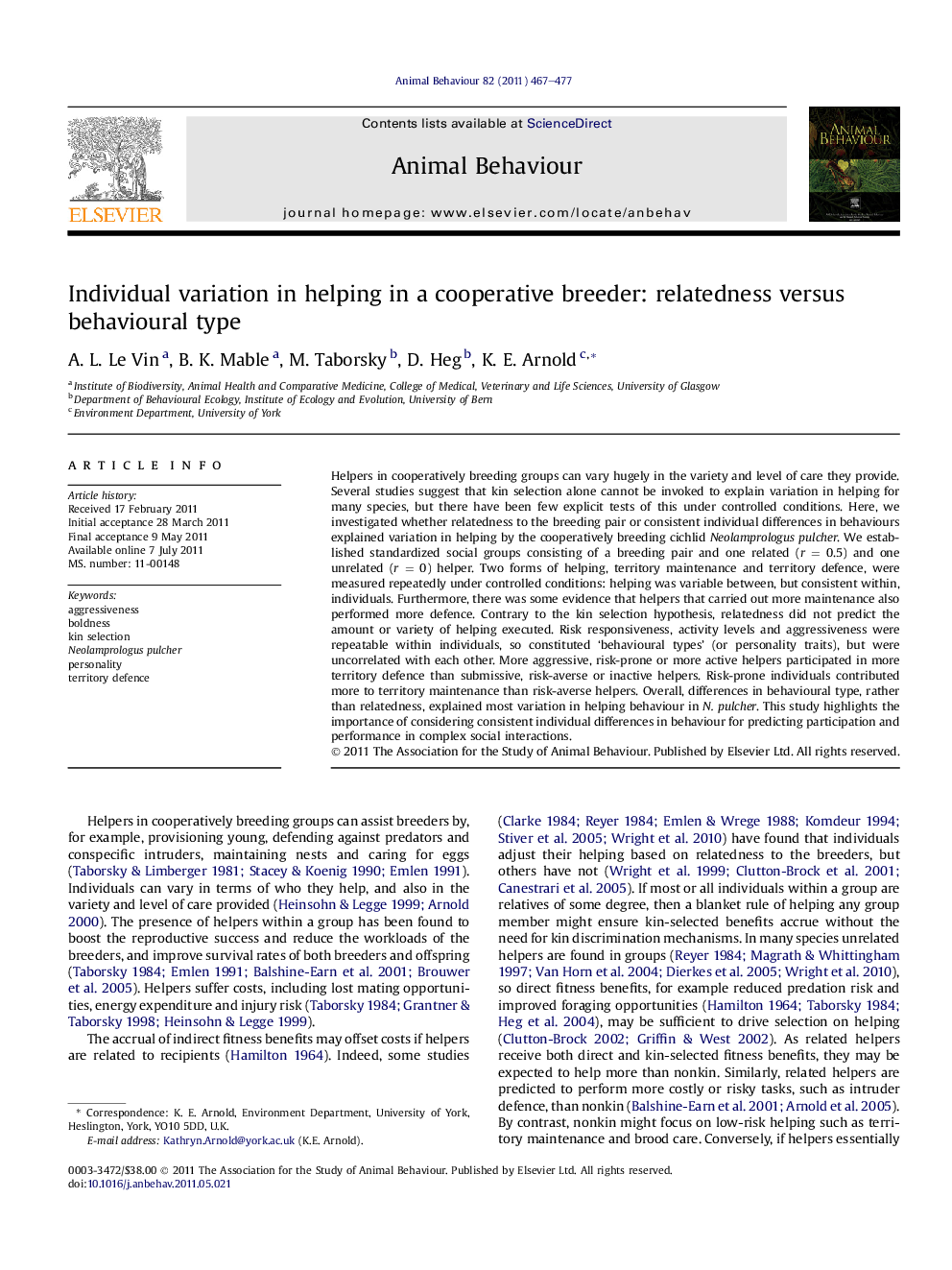| Article ID | Journal | Published Year | Pages | File Type |
|---|---|---|---|---|
| 2416959 | Animal Behaviour | 2011 | 11 Pages |
Helpers in cooperatively breeding groups can vary hugely in the variety and level of care they provide. Several studies suggest that kin selection alone cannot be invoked to explain variation in helping for many species, but there have been few explicit tests of this under controlled conditions. Here, we investigated whether relatedness to the breeding pair or consistent individual differences in behaviours explained variation in helping by the cooperatively breeding cichlid Neolamprologus pulcher. We established standardized social groups consisting of a breeding pair and one related (r = 0.5) and one unrelated (r = 0) helper. Two forms of helping, territory maintenance and territory defence, were measured repeatedly under controlled conditions: helping was variable between, but consistent within, individuals. Furthermore, there was some evidence that helpers that carried out more maintenance also performed more defence. Contrary to the kin selection hypothesis, relatedness did not predict the amount or variety of helping executed. Risk responsiveness, activity levels and aggressiveness were repeatable within individuals, so constituted ‘behavioural types’ (or personality traits), but were uncorrelated with each other. More aggressive, risk-prone or more active helpers participated in more territory defence than submissive, risk-averse or inactive helpers. Risk-prone individuals contributed more to territory maintenance than risk-averse helpers. Overall, differences in behavioural type, rather than relatedness, explained most variation in helping behaviour in N. pulcher. This study highlights the importance of considering consistent individual differences in behaviour for predicting participation and performance in complex social interactions.
